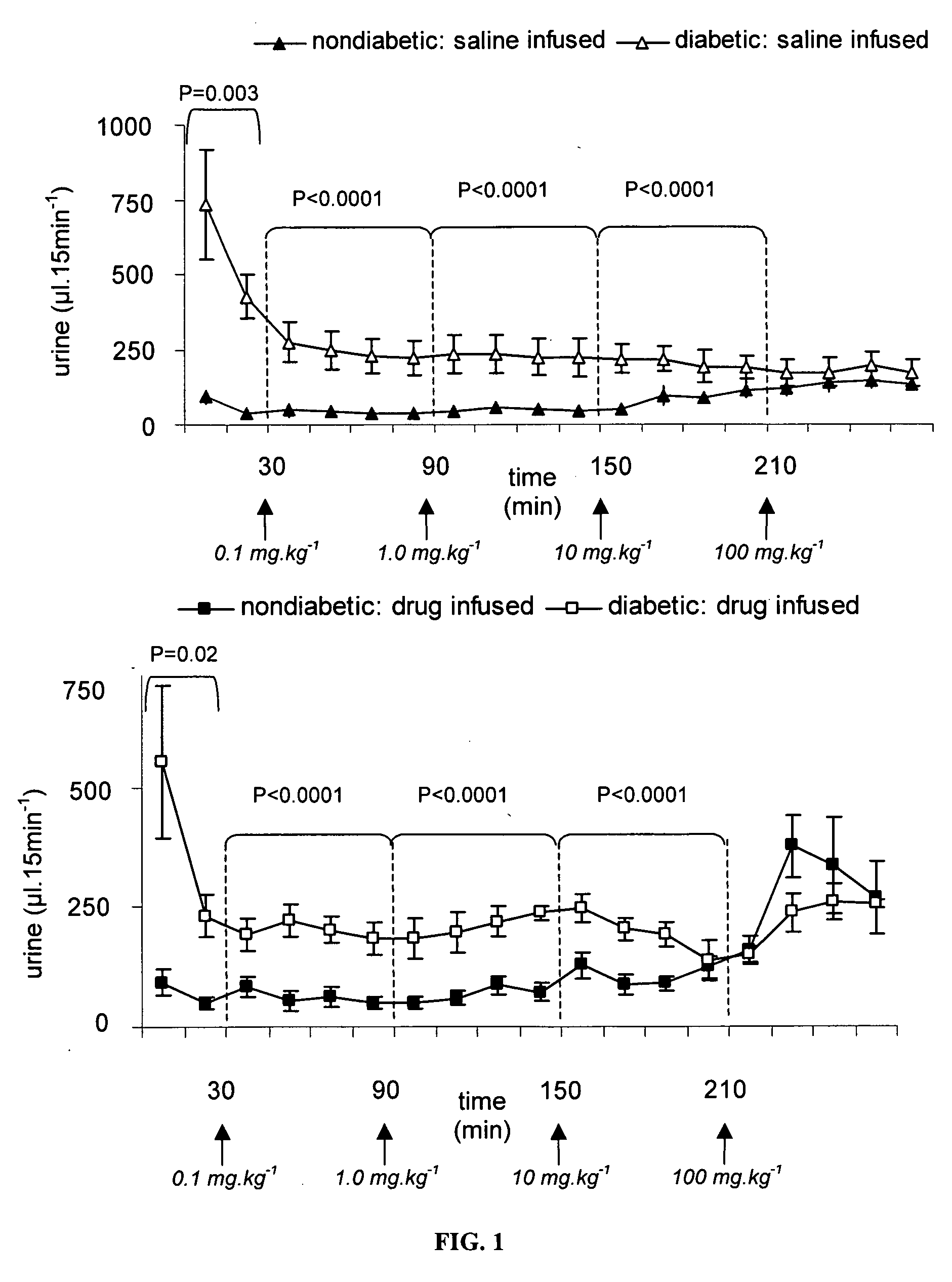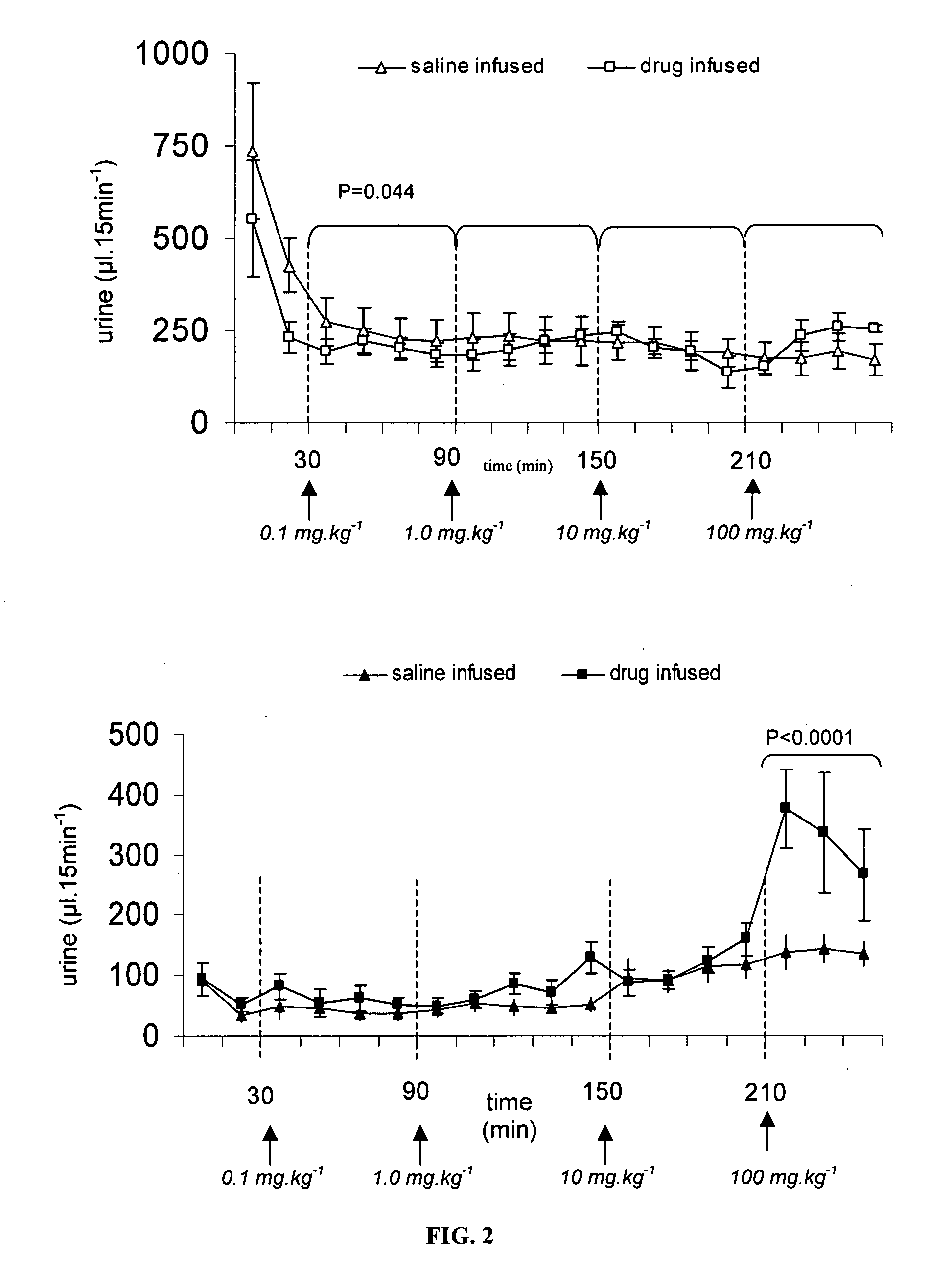Copper antagonist compounds
a technology of copper antagonists and compounds, applied in the field of copper antagonists, can solve the problems of loss of the ability to perform activities of daily living, high care cost, emotional and psychological toll on caregivers, etc., and achieve the effect of eliminating copper and being readily excreted by the kidneys
- Summary
- Abstract
- Description
- Claims
- Application Information
AI Technical Summary
Benefits of technology
Problems solved by technology
Method used
Image
Examples
example 1
[0478] This Example was carried out to determine for the sake of subsequent comparison baseline physiological data relating to the effects of streptozotocin (STZ) treatment in rats.
[0479] All methods used in this study were approved by the University of Auckland Animal Ethics Committee and were in accordance with The Animals Protection Act and Regulations of New Zealand.
[0480] Male Wistar rats (n=28, 303±2.9 g) were divided randomly into STZ-treated and non-treated groups. Following induction of anesthesia (5% halothane and 2 l.min−1 O2), animals in the STZ-treated group received a single intravenous dose of streptozotocin (STZ, 55 mg.kg−1 body weight, Sigma; St. Louis, Mo.) in 0.5 ml saline administered via the tail vein. Non-treated animals received an equivalent volume of saline. Following injection, both STZ-treated and non-treated rats were housed in like-pairs and provided with access to normal rat chow (Diet 86 pellets; New Zealand Stock Feeds, Auckland, NZ) and deionized w...
example 2
[0483] This Example assessed the effect of acute intravenous administration of increasing doses of trientine on the excretion profiles of copper and iron in the urine of STZ-treated and non-STZ-treated rats.
[0484] Six to seven weeks (mean=44±1 days) after administration of STZ, animals underwent either a control or trientine experimental protocol. All animals were fasted overnight prior to surgery but continued to have ad libitum access to deionized water. Induction and maintenance of surgical anesthesia was by 3-5% halothane and 2 l.min−1 O2. The femoral artery and vein were cannulated with a solid-state blood pressure transducer (Mikrotip™ 1.4F, Millar Instruments, Texas, USA) and a saline filled PE 50 catheter respectively. The ureters were exposed via a midline abdominal incision, cannulated using polyethylene catheters (external diameter 0.9 mm, internal diameter 0.5 mm) and the wound sutured closed. The trachea was cannulated and the animal ventilated at 70-80 breaths.min−1 w...
example 3
[0499] This example was carried out to determine the effect of acute intravenous administration of increasing doses of trientine on the copper and iron content of cardiac tissue in STZ-treated and non-STZ-treated rats, and to assess the effect of trientine on tissue repair.
[0500] Methods were carried out as follows. Spectrophotometric analysis was conducted as described in Example 2. Cu, Fe and Zn in tissue digests were determined at Hill Laboratories (Hamilton, New Zealand) using either a PE Sciex Elan-6000 or PE Sciex Elan-6100 DRC ICP-MS. The operating parameters are summarized in the Table below.
Instrumental operating parameters for ICP-MSParameterValueInductively coupled plasmaRadiofrequency power1500WArgon plasma gas flow rate15l · min−1Argon auxiliary gas flow rate1.2l · min−1Argon nebuliser gas flow rate0.89l · min−1InterfaceSampler cone and orifice diameterNi / 1.1mmSkimmer cone and orifice diameterNi / 0.9mmData acquisition parametersScanning modePeak hoppingDwell time30ms ...
PUM
 Login to View More
Login to View More Abstract
Description
Claims
Application Information
 Login to View More
Login to View More - R&D
- Intellectual Property
- Life Sciences
- Materials
- Tech Scout
- Unparalleled Data Quality
- Higher Quality Content
- 60% Fewer Hallucinations
Browse by: Latest US Patents, China's latest patents, Technical Efficacy Thesaurus, Application Domain, Technology Topic, Popular Technical Reports.
© 2025 PatSnap. All rights reserved.Legal|Privacy policy|Modern Slavery Act Transparency Statement|Sitemap|About US| Contact US: help@patsnap.com



